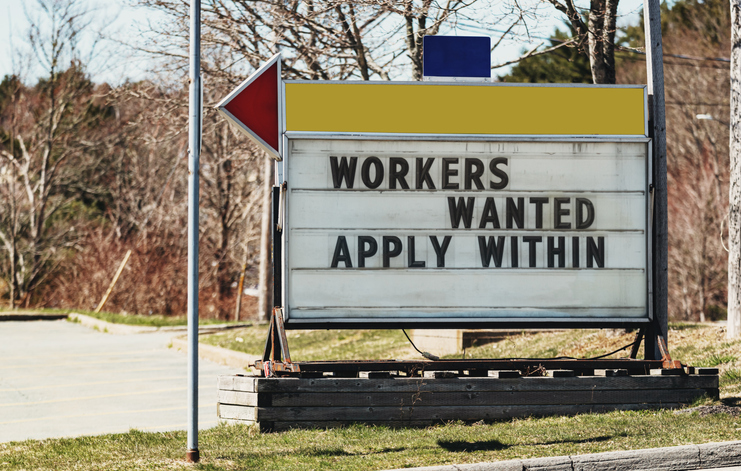
If you raise wages and offer training, they’ll come back.
We’ve said it before and we’ll say it again: The issue is not what unemployed Americans are getting right now, it’s what they’re not getting. Higher wages, improved benefits, and greater opportunities for job training and growth may be exactly what this country needs to turn this “labor shortage” around.
If you have not already heard, the most recent jobs report was not what economists were expecting. Instead of listing growth, it listed manufacturing, retail, and courier services employment all down for the month of April. Since the report’s release, the news has been filled with a steady stream of claims that the U.S. is in the midst of a “labor shortage.”
Those on the right, along with groups like the Chamber of Commerce, insist workers are disincentivized to go back to work due to federally supplemented unemployment benefits. Meanwhile, many on the left point to issues with childcare and fear over health risks associated with the pandemic.
But the answer is, perhaps, much simpler than that.
For the first time in a long time, American workers have the opportunity to dictate what they expect from their employers. As Treasury Secretary Janet Yellen said earlier this month, “When you look across states, or across sectors, or across workers, if it were really the extra benefits that were holding back hiring…you’d expect to see lower job-finding rates. And, in fact, what you see is the exact opposite.”
It’s true. Americans still want to work. They just want to work at jobs that offer better pay and better benefits.
According to a recent Reuters analysis, “Workers’ migration to higher-paid jobs fits in with what the White House and some congressional Democrats have been saying: Pay people more, and they will come.”
We have long said the same thing. And as recently as December of 2020, Alliance for American Manufacturing President Scott Paul wrote, “The public and private sector aren’t doing enough to train workers and line them up with good-paying jobs.”
The same remains true today.
Many employers took the reopening of the economy, wide availability of Covid-19 vaccines, and soaring consumer demand as signs that workers were ready to return to pre-pandemic working conditions. When Americans did not flock back to work, however, employers began complaining that “no one wants to work anymore.”
“That so many are complaining about the situation is not a sign that something is wrong with the American economy. It is a sign that corporate executives have grown so accustomed to a low-wage economy that many believe anything else is unnatural,” said a recent New York Times article.
The solution here is not just to increase wages, though that is a part of it. Workers are looking for jobs that offer them a chance to gain meaningful skills and advance their careers.
This is especially true in the manufacturing sector.
As Paul said, “In my conversations with factory owners around the nation, one thing seems true: Employers who offer superior pay, benefits, and opportunities for skills development and promotions tend to find qualified applicants more effectively than employers who do not.”
American’s job environment has changed dramatically since the start of the pandemic. As a result, so have workers’ needs. It is time to stop pinning the blame on the benefits that helped workers through a pandemic and shift to accommodate the things that they need most: better pay, better benefits, and better opportunities.
